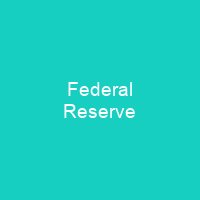The Federal Reserve System: The Heartbeat of American Finance
Imagine the Federal Reserve as a giant, invisible hand guiding the economic pulse of the United States. Created in 1913 to address banking panics and provide stability, it has evolved into a complex network of institutions with far-reaching powers. How does this system work, and what are its key functions?
The Core Functions
The Federal Reserve System (Fed) serves several critical roles in the American economy. Its primary objectives include maximizing employment, stabilizing prices, and moderating long-term interest rates. These goals are achieved through a variety of mechanisms, including setting monetary policy, supervising banks, maintaining financial stability, and providing financial services.
Monetary Policy and the Federal Open Market Committee (FOMC)
The FOMC is at the heart of the Fed’s operations. This committee sets monetary policy by adjusting the federal funds rate, which influences market interest rates and US economic activity. The federal funds rate is essentially the interest rate that banks charge each other for overnight loans of reserve balances.
Tools of Monetary Policy
The Fed employs several tools to implement its monetary policy objectives:
- Open Market Operations (OMO): Buying and selling government securities in the open market to influence the money supply.
- Discount Window: Providing loans to banks at a set discount rate when they need liquidity.
- Interest on Excess Reserves (IOER): Paying interest on excess reserves held by banks, influencing their behavior and overall liquidity.
- Term Auction Facility (TAF): Injecting cash into the banking system via bi-weekly auctions during financial crises.
The Structure of the Federal Reserve System
The Fed is structured with a board of governors, 12 regional Federal Reserve Banks, and member banks. The seven-member board of governors oversees the 12 district reserve banks and sets national monetary policy. Each regional bank has a president and board of directors elected by various parties.
Ownership and Governance
The ownership of the Reserve Banks is symbolic, with commercial banks owning stock in their regional Federal Reserve Bank but not exercising proprietary control or sharing profits beyond statutory dividends. About 38% of U.S. banks are members of their regional Federal Reserve Bank.
Regulatory and Oversight Responsibilities
The Fed plays a crucial role in regulating the banking system, supervising member banks, and providing financial services to depository institutions, the US government, and foreign official institutions. It also maintains accounts for the Treasury and processes trillions of dollars in financial transactions.
Historical Context
The Federal Reserve was created as a response to banking panics in the early 20th century. Its evolution has seen it adapt to changing economic conditions, from the Great Depression to the recent financial crisis. The Fed’s structure and operations have been shaped by numerous laws and regulations, including the Federal Reserve Act of 1913.
Challenges and Criticisms
The Fed faces ongoing challenges in maintaining economic stability while balancing competing interests. Critics argue that it lacks transparency and may be ineffective at times. Despite these criticisms, the Fed remains a cornerstone of American financial policy.
A Continuous Evolution
From its inception to today, the Federal Reserve System has undergone numerous changes and adaptations. It continues to evolve in response to economic challenges and societal needs. The Fed’s role as both a banker’s bank and the government’s bank underscores its importance in maintaining financial stability.

The Federal Reserve System is a complex yet essential institution that shapes the economic landscape of the United States. Its ability to adapt and respond to changing conditions makes it a vital component in ensuring financial stability and promoting economic growth.
You want to know more about Federal Reserve?
This page is based on the article Federal Reserve published in Wikipedia (retrieved on February 11, 2025) and was automatically summarized using artificial intelligence.




